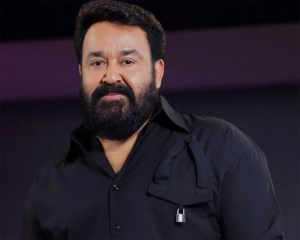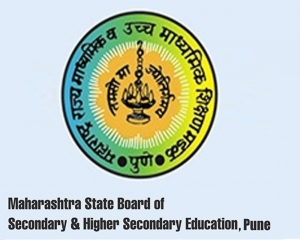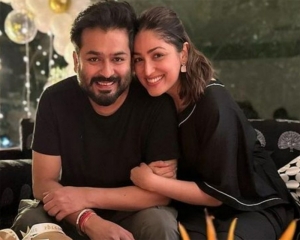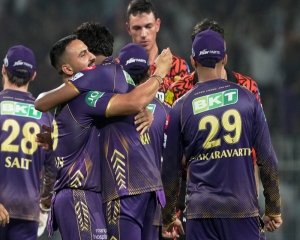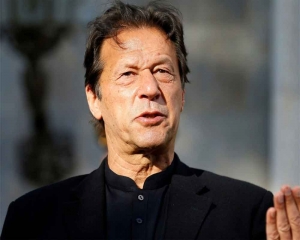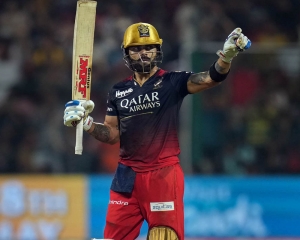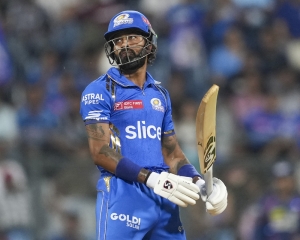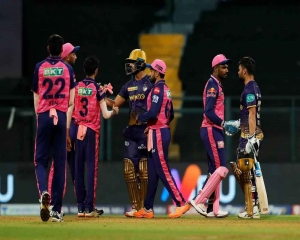The Oocyte market is booming and with it the debate around the scrupulousness of the commercialisation of human eggs, SHAlINI SAKSENA delves into the issue with big question marks
The Government banned commercial international surrogacy last November and since then a debate has been raging on the issue. There is a clear divide between the childless couples, the doctors, the activists and those who have helped draft the proposed bill on surrogacy.
Recently, External Affair Minister Sushma Swaraj took to Twitter to highlight a British couple’s plight. The couple, who have had a baby through surrogacy, have been unable to get visa papers for their four-month-old daughter because commercial surrogacy is banned in Britain. This means that if the papers for the baby do not arrive by October 7, 2016, (that’s when the couple’s visa expires) they may have to leave the baby behind, most probably in an orphanage.
It is not just about banning commercial surrogacy, activists opine that everything that comes under the gambit of reproductive industry, needs to be minutely monitorsed, each aspect scrutinised and, if need be, banned. It is not like real estate and commercialisation of the womb needs to be banned.
But it is not just surrogacy, where commercialisation has led to exploitation of women who need money. Pinki Virani, award-winning author of five bestselling books, including the world-first in international publishing Politics Of The Womb-The Perils Of IVF, Surrogacy & Modified Babies, talks about the issue of the centuries-old colonisation of the woman’s womb and questions its contemporary medicalisation. As it does the placing of parts of that womb in the marketplace, divided up and traded as ova, uterus. Through her book, she calls for an international ban on all commercial third-party reproduction. So as to end the supply-chain of reproductive slavery which has birthed a bizarre baby bazaar.
According to a 2013 World Bank estimate, the drop in fertility in India started about 10 years back with a steady 17 per cent decline from 2000. Rough estimates suggest that nearly 30 million couples in the country suffer from infertility, putting the incidence rate of infertile couples at 10 per cent.
A nine-city survey conducted by Helping Families found that the number of Indian couples turning to artificial methods to conceive has gone up. Out of the 2,562 people who participated in the survey, nearly 46 per cent were found infertile, the survey revealed.
By 2050, according to a WHO report, 20 to 40 per cent of women across the globe may not have any ovarian reserve to bear a child and will have to go for IVF treatments. Though most women have regular menstrual cycles and look healthy, about 10 per cent lose fertility sooner than expected, says the report.
Due to rise in infertility, egg donation, next to surrogacy, has become a business in India.
However, it is difficult to quantify the number of Indians going for IVF. “There is no central or autonomous body as yet to collate figures and so wild numbers do the rounds. One can only assume that they are floated by a section of vested interests who run the commercial reproduction factories. This includes some so-called ‘clinics’, owned by dubious-degree holders, whose sole role seems to be to ensure that the woman is given hyper-hormone injections so that more eggs can be collected from her. It is also important for every Indian to understand that they may, actually, not need IVF and that there are different kinds of infertilities under the broad division of male-factor and female-factor infertility. This also means that it may not need to buy oocytes,” Virani says.
She also tells you that there are no verifiable numbers but it can be safely said that there is wanton and vicious exploitation of women’s bodies for their human eggs, the younger, the better.
“The women are from all over the subcontinent. And there are no ‘donors’ because the commercialisation of this human genetic part is being mined out of women’s bodies by those who are purchasing them,” Virani says, adding that the term egg donation is a misnomer since there is no donation involved, only monetary transaction. Hence, the correct word to use, Virani says, is oocyte sale.
Even though infertility has been on the rise, there is very little information available in the public domain. And this is true all over the world.
“There are a few science reporters and journalists who believe in responsible reproduction doing what they can in developed countries to warn gullible people and the level to which a section of the repro-tech industry has sunk — for example, in putting human eggs and the uterus in the market place in the name of an unborn child and then commodifying it, proof that hyper-stimulation of ova carries deadly risks for both, the woman and the intending child,” Virani says.
And there are risks. According to Dr Duru Shah, scientific director, Gynaecworld, president of Indian Society for Assisted Reproduction in Mumbai, the donor goes through complete evaluation through a physical examination and investigations. “Once selected and included in the egg donor programme, she receives about 10-12 days of hormonal injections and blood tests, plus frequent visits to the IVF Centre for monitoring through ultrasound. She also may have to go through complications of the egg extraction procedure or excess stimulation of her ovaries. If she is single and young, she may not understand the implications of such a procedure. I strongly feel that egg donation should be allowed only in those women who have already had at least one child because the process may prevent her from having her own children in future,” Dr Shah explains.
The debate is over the grey zone, Dr Shah tells you. “It is financially driven, despite the pain experienced by the egg donor. Some centres do not take consent of the recipients when using the eggs. The debate on cryo-preserved eggs, when extra eggs are not utilised, continues. Whether the donor, the physician or the recipient of the donated eggs will finally own the eggs, remains unanswered,” Shah explains.
As per ICMR guidelines, commercial egg donation is legal in India. However, it has to be anonymous and confidential. The egg donor signs a contract with and gives consent to the clinic, forsaking her rights over the donated eggs.
The guidelines are left open to interpretation because they don’t clarify if donors’ mature sexual reproductive cells can be sent abroad or the number of times a woman can donate eggs. Foreign clients give better money to agents and clinics and many come to India because the procedure is much cheaper.
During a normal reproductive cycle, a single egg matures. Assisted reproductive technologies pump in a reproduction inducing hormone into the body, which leads to making of multiple eggs. Here again, there is a grey zone since there is no standard on the dosage of the hormone injected.
Each body reacts to the hormone in a different manner and the number of eggs that mature may vary. Since there are no guidelines, many clinics and agents take advantage of the donor and use high dose of the hormone. This leads to maturing of as many as 50 eggs.
This means that while the donor is paid the same amount, the clinic and the agents end up making money by selling the extra eggs to other couples who are unable to pay a higher fee. A high dose of the hormone, puts the life of the donor at risk. Also, there are many other complications like swelling, pressure in the ovarian area, vaginal dryness, hot flushes, ovary loss and sometimes even death.
Till now, there have been two such deaths reported. One in Delhi in January 2014 where a 26-year-old woman had found died. Initial post-mortem report submitted by a three-member board at AIIMS found hypertrophy in the ovaries, an enlarged uterus of about 120 gm and haematoma in the utero-vesical pouch in the peritoneal cavity or abdomen.
The second was the death of 17-year-old Sushma Pandey because of the clinic’s negligence in 2010.
“Egg donation is not new in India. There can be no guidelines for the amount of hormone that can be injected into the donor because of how it affects each differently. I have been practising for more than two decades. Doctors should not be seen as people who are only interested in extracting eggs. No gynae wants to bring in money through eggs since it affects the quality. We don’t see the donor as an egg making machine. We are doctors with experience and that benefit should go to us,” Dr Nayana Patel of Akanksha IVF Clinic in Anand, Gujarat, says. She gets one in 10 infertile couple in need of an egg donation.
Also, it is not as if the donors who come are totally ignorant. “Most of the donors who come to us are well-informed. It is not as if the doctor will give one injection and the extraction takes place. It involves a certain procedure and this is explained in detail to the donor. Nobody downplays the risks involved. Also, from the time assisted reproductive technology came to India, there has been only one donor death that I know of due to clinic’s negligence. There are always risks involved in IVF. Death of a young person is always sad. Banning should not be based on one failure considering that there have been lakhs of success stories and the fact that it is the need of the hour,” Dr Patel says.
Also, those who say that childless couple have other alternatives don’t understand what it means for a couple who have been wanting a child for years and have been unable to conceive. People in India are different.
“Not everyone wants to adopt. It is very easy to say adoption is there. Most couples want a child of their own. It is not as if the woman who needs an egg is convinced easily. Most women are very uncomfortable taking an egg from another woman. They only go for it when the test results prove that there is no other option available,” Patel explains.
The reason why the sector is unorganised is because despite certain guidelines, there is no monitoring. “Banning the oocyte sale is not the solution. It will only mean that people with money will go abroad for the treatment or the trading will happen under the radar. If there were monitoring, guidelines were modified and a system for punishment, it would ensure that there would be no malpractice. If the Government feels that there is a gap, it should sit with the stake-holders and come up with guidelines where things will automatically fall in place. There is need to regulate it, Patel asserts.
Agrees Dr Shah. “Monitoring of this process is truly needed. Egg donation is being offered in some clinics when it is not really needed, but being done just to expedite pregnancy in order to reduce the cost and time of the recipient couple in achieving a pregnancy, especially if the lady is above 35 years. Besides, it helps the centre to show its high success rates and high pregnancy rates,” Shah says.
Dr Rita Bakshi, founder and chairperson of International Fertility Centre in the Capital, gives you a slightly different perspective on the raging debate. “As opposed to sperm donation, the egg donation procedure requires the person to take hormonal injections which can have side-effects. Also, the person has to be put under general anesthesia for the extraction; all this adds to the debate. As far taking advantage, no one is talking about taking sperm donation as an advantage. The same holds true for egg donation, all you are doing is taking help from a shared donor. If a person can take sperm donation, why not egg donationIJ As long as the people involved — the donor and the person who is getting the benefit of the shared donation — are consenting adults and understand the procedure involved — the implication of giving and taking and the anonymity of the donor is kept a secret — there should be no problem,” Bakshi tells you.
She also says that one or two bad cases should not become a roadblock in helping those who genuinely need assistance. As long as all the precautions are taken care of, risks covered and all the information given to the donor and the recipient, it should not act as a hindrance. She tells you that most young girls who come to her are very well-informed of the procedure.
“Young donors are from all walks of life. Once they agree to undergo the procedure, the women are counselled at every stage. Also, before they step into the clinic, they have heard of the procedure from their friends who have already undergone it. But we don’t go on the premise that they are informed. We counsel them as if they don’t know anything. Because, if anything goes wrong, they will be at your doorstep and this is something that you don’t want,” Bakshi says, adding that she gets around five to seven donors in a month and pays them around Rs 40,000-Rs 50,000 and the entire procedure costs Rs 2 lakh. This includes the cost of the injections given to the donor.
Gaurav Wankhede, founder-CEO of Become Parents, a surrogacy agency based in Mumbai, says that the cost is determined by several factors — whether the donor is a graduate or an undergraduate, what part of India she is from, her religion, whether she is vegetarian or non-vegetarian, fair skinned, etc. For a UG it is around Rs 30,000, for a graduate it is Rs 80,000 to Rs 90,000.
Wankhede says that the controversy is not just about egg donation but about surrogacy as a whole. Surrogacy has two parts — a couple may require a surrogate if her eggs are good or she may require both. But the whole concept of ‘donation’ doesn’t exist in the 21st century. Nobody will voluntarily give her egg so the Government should make it monetarily viable for the donor like it happens in the US where a young woman from, say Stanford University or from Yale, gets $25,000,” Wankhede says.
If the amount being paid in India is not enough, he says, why not set a minimum monetary bar of say $10,000 which is around Rs 7 lakh, enough for the person to start her own business. “One can also make it compulsory that the donor be given Rs 6,000 a month for the rest of her life. So while it is still called ‘donation’, it is a win-win situation for everyone involved. The donor should be well-compensated for all the trouble that she has to undergo during the procedure,” Wankhede opines.
The problem in India is that we have those people making guidelines who have no concept of what surrogacy is all about. What is needed are people who are from the industry and understand the situation and propose changes that are required. Infertility is a growing concern hence there are so many clinics in the country.
“Also, the ICMR guidelines are just that — guidelines which say that there should be not more than seven extractions. If she has 10 eggs, why waste the three eggsIJ The problem arises when the doctors hyper-stimulate. The intent behind the number is good but where is the monitoringIJ How does one monitor that the clinics are only extracting seven eggsIJ What is preventing the clinics from extracting 20IJ,” Wankhede asks
India needs laws, as there are in the US, because guidelines can be manipulated. All Western countries have strict laws. Surrogacy should be made available to people who really need it. Also, there is no representation from a patient body. What is needed the who's who of the industry. There should be consultation with doctors and other experts rather than just ban it, buckle under pressure and lose out on the foreign exchange.
“In the US, the entire procedure costs over $150,000, here in India it is $35,000. So the US is losing $115,000 per procedure and multiply that by thousands. Since we don’t have laws in place, we just want to ban it,” Wankhede states.
Dr Kaberi Banerjee, a leading infertility and IVF specialist with over a decade of experience, says that NGOs concern for the surrogates and the donors is right. “But we must not lose the whole picture, why we are doing this, we should see who is being benefitted, if there is a problem should we ban it or should there be proper checks to prevent the wrong from happening. We should not have this knee-jerk reaction and say that it is a money-making industry,” Banerjee
tells you.
She says that the clinics will go for egg donation only after four failed IVF attempts. “Failure of IVF means that there is something wrong in the sperm or the egg or the uterus. The sperm factor can be taken care of by intra-cytoplasmic sperm injection but the egg count goes down from the age of 35. This is when we need the help of a young donor; we match the physical characteristics, take the sperm from the husband, the egg from the donor, make the embryo and plant this in the wife. In this case, the chances of success increase to 50 per cent as opposed to IVF where the success rate is around 30 per cent,” Banerjee says, adding that egg donation should not be more than six in a cycle. And it is not as if she can’t have babies of her own and is getting
depleted.
But what clinics need to make sure is that the donor is healthy. All tests like thyroid, haemoglobin, sugar, etc should be done to avoid any complications later on. “We usually don’t take a single donor more than three times and not before three months. There have been studies on women who have done 10-12 IVF cycles, it has been found that long term side effects are almost nil — no hypertension or risk of diabetes or cancer. The only risk is due to one oral medication and can be for ovarian or endometrial cancer. But this is not given to the donor but the patient and even then the total number of cycles is monitored,” Banerjee says.
But this doesn’t take away the fact that unlike sperm donation that doesn’t require any procedure, egg donation is an invasive procedure. It needs to be done by a trained person. “You give anaesthesia, take a needle and take out the egg. But if the donor is an adult and has decided to give her egg and get some money, has not been coerced or forced, understands what she is doing, the procedure is done properly, her health and other safety issues have been taken care of, there should be no problem. My personal opinion is that if a person at 18 has the right to vote and the Government thinks that a woman is able to choose a leader for the next five years, women should have the freedom to choose to what to do with their body. If not, then we should increase the age of adulthood to 21.
“The problem arises when procedures are not followed and this probably happens in less than five per cent clinics don’t follow this. Almost 95 per cent of the clinics follow a protocol since at the end of the day we are all responsible clinicians,” Banerjee says adding that donors should generally be between the age of 19 to 28. So if she donates one time in one, one will not have an impact. But if she donates one every three months, there will be long time implications.
While the recipients may be able to get the physical characteristics, a grey area is whether the egg so received has any genetic disordersIJ But doctors tell you that there are several tests that can be done to check this. Also, though the guidelines may skim the family history, most IVF clinics ensure that the donors answer all relevant family health-related issues.
Tests like Preimplantation Genetic Screening of IVF embryos for success is a test that is done on the embryo because genetics in itself is so complex. Before that there is karyotyping which does the genetic analysis on the donor. It gives the history of the donor detailing family history — how the grandfather died, at what age, etc,” Wankhede says.
Another important reason for the debate is that there is a lot of money. As opposed to a sperm donor who gets Rs 10,000- Rs 15,000, an egg donor gets a higher payment.
“But then the risks are higher too for an egg donor. Also, working ladies are paid a higher amount because they need to be compensated for the time they take off from work,” Banerjee says.
The solution, Shah tells you, is to customise or individualise treatment based on the individual couple needs. “We need to give importance to the cause for infertility, the women’s age presence or absence of co-existing problems like endometriosis, PCOS, fibroids, results of any previous treatments etc. The treatment can be tailored as per needs of the individual couple,” Shah says.
For Virani, the solution lies in shifting to altruistic oocytes. “The world over, countries are shifting to altruistic oocytes. This would mean genuine donations, the true goodness of a woman’s heart in helping another. If India, and its neighbouring countries, want to end the supply-chain of reproductive slavery which pretends that it is about a baby — even as there is enough to indicate that not all oocytes are going towards making babies — it needs to end this oocyte-bazaar. Women can’t be ova-vendors just as human beings can’t be organ-sellers,” Virani states.














